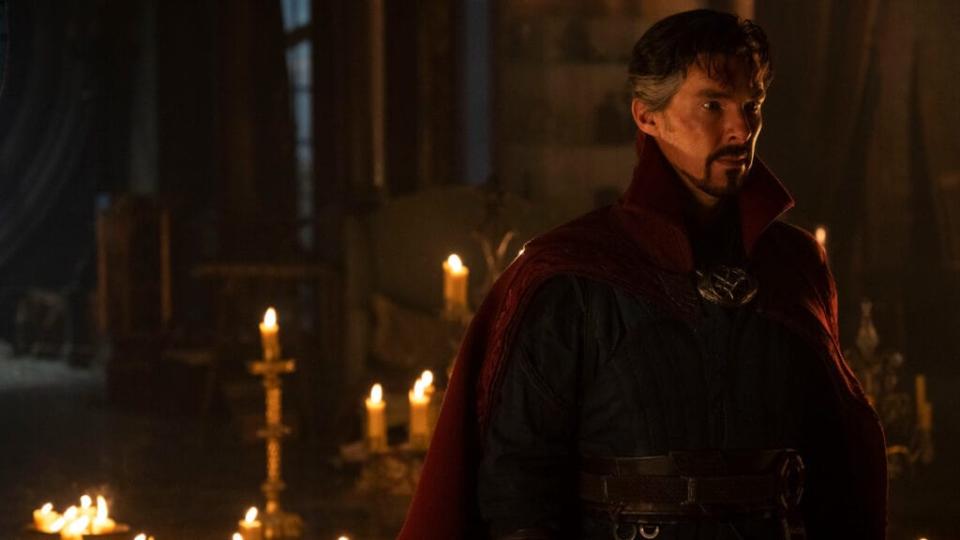‘Doctor Strange 2’ Writer Explains Wanda’s Controversial Arc: ‘It Was There for the Taking’
- Oops!Something went wrong.Please try again later.
(Warning: This post features spoilers for “Doctor Strange in the Multiverse of Madness.”
Fresh off a massive opening weekend box office, “Doctor Strange in the Multiverse of Madness” is proving to be one of the more divisive Marvel movies in recent memory. Fans seem to be split over the decision to peg Elizabeth Olsen’s Wanda Maximoff as the antagonist in the sequel – a fact that was obscured in the marketing, but one many expected given the character’s transformation into the Scarlet Witch in the comics.
But the shift from hero to antagonist proved difficult for some fans to swallow coming off the character’s deeply empathetic portrayal in “WandaVision,” which explored how her grief over Vision’s death manifested in holding an entire town hostage. That’s a bit different than slicing and dicing an entire secret group of superheroes in “Doctor Strange 2.”
So how did Wanda come to be the villain of this sequel? TheWrap asked writer Michael Waldron, who signed on to the project while still working on Marvel’s “Loki” Disney+ series. Waldron and director Sam Raimi inherited “Doctor Strange 2” from previous director Scott Derrickson but opted to take the story in a different direction.
“There was always the notion of her as part of the ensemble and this discussion of does she go bad at the end? I mean, it’s always been in the cards because it’s who the character is in the comics, building to ‘House of M’ and all that stuff, there’s Wanda descending into madness,” Waldron told TheWrap. “We were excited about the idea of making her the primary antagonist in the film because it felt like there was no stronger antagonist. And it felt like to have her as just a member of an ensemble only to turn bad at the end would actually be shortchanging both versions of that journey. You’d get maybe a lousy version of her fall from grace, and also maybe a lousy version of her being a villain, as opposed to the really fun version of her being the villain.”
Additionally, Waldron took inspiration from the credits scene at the end of “WandaVision” for Wanda’s turn: “There’s the feeling that the door had been open for us. She opened the Darkhold at the end of ‘WandaVision’ and that’s the Book of the Damned. So it was there for the taking.”
While “WandaVision” reflected a tremendously emotional experience for Wanda, Waldron wanted to explore something else that the character hadn’t quite reckoned with as it related to Vision’s death: her anger.

“My feeling was that ‘WandaVision’ pushed her to the place where she reckoned with this grief, but maybe what she hadn’t reckoned with was her anger over all of it, and that was something that I discussed with [Elizabeth Olsen],” Waldron said. “And I think that that’s what the Darkhold seized on, was that anger and that really clouds Wanda’s decision-making.”
That said, Waldron thinks Wanda makes some fair points over the course of “Multiverse of Madness.”
“I also think she’s making good points throughout the movie. Stephen did give Thanos the Time Stone. Did he have to? Could there have been another way? That question is posed a lot throughout the movie. If he hadn’t given Thanos the Time Stone, I mean Wanda killed Vision. The Mind Stone was gone. It’s just to say, I think that she’s making good points and it just felt like a really delicious conflict to explore.”
By the end of the film, Wanda sees the error of her bloodthirsty quest for finding her sons and destroys the Darkhold in every universe, and Waldron acknowledges the sad nature of the film’s conclusion.
“There isn’t always a fully satisfying ending to the entire audience, especially when you have a villain that everybody loves and cares about,” Waldron said. “The ending in a lot of ways is probably going to be sad and it’s a tragedy. But I hope what was satisfying is the feeling that that at the end of this thing, you do see Wanda break free of the Scarlet Witch’s hold on her, of the Darkhold.”
Waldron added that by the film’s end, it was important both to himself and Olsen that Wanda takes responsibility for her actions.
“But I also am grateful that she admits – and this is important to all of us, especially Lizzie – that she opened the Darkhold. She takes responsibility for what she did. And then she makes a sacrifice to hopefully make sure it doesn’t happen to another Wanda elsewhere in the multiverse.”
“Doctor Strange in the Multiverse of Madness” is now playing exclusively in theaters.

